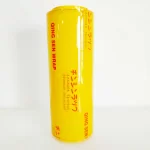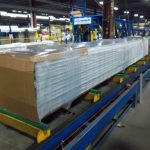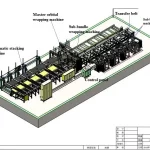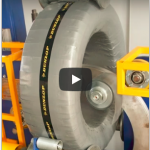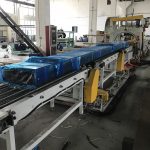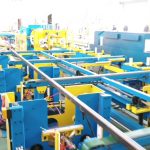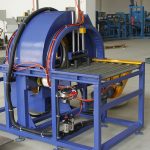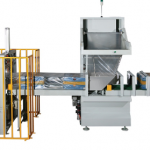Aluminum profile high speed wrapping machine by film and HDPE.
info@fhopepack.com
The stretch wrapping machine for section choose the strong ring and power motor for wrapping.
The ring speed upto 120R/min
• The high rotation speed of the wrapping ring, up to 120 rpm, enables wrapping multiple aluminum profiles per minute. This provides high throughput suitable for production environments.
• The wrapping ring is made from wear-resistant cast iron or special aluminum alloy to withstand the abrasion from frequent high-speed contact with the aluminum profiles.
• Powerful servo motors precisely control the rotation speed and position of the wrapping ring to ensure stability during high-speed operation.
• The automatic lifting device precisely lifts the aluminum profile and lowers it onto the rotating wrapping ring. This improves consistency and reduces operator workload.
• Safety features like light curtains, guards and safety interlocks completely enclose the wrapping area during operation to protect operators.
• The PLC control system automates the wrapping process and coordinates the high-speed rotation of the ring with the automatic lifting device. This ensures stability at high throughput.
• The HMI monitor allows operators to easily set various wrapping parameters for different aluminum profile sizes, as well as monitor production data for maintenance purposes.
• The machine can be customized to suit the dimensions, lengths and cross-sectional shapes of customers’ specific aluminum profiles through modifications to the wrapping ring, lifting device and safety guards.
• After-sales service includes technical support, maintenance assistance and supply of spare parts to keep the machine running optimally over its lifespan.
In summary, the aluminum profile high speed wrapping machine leverages a powerful ring rotation system, automatic lifting device and intelligent controls to achieve high throughput wrapping of aluminum profiles using stretch film or HDPE. Customizability and service further maximize value for customers.
